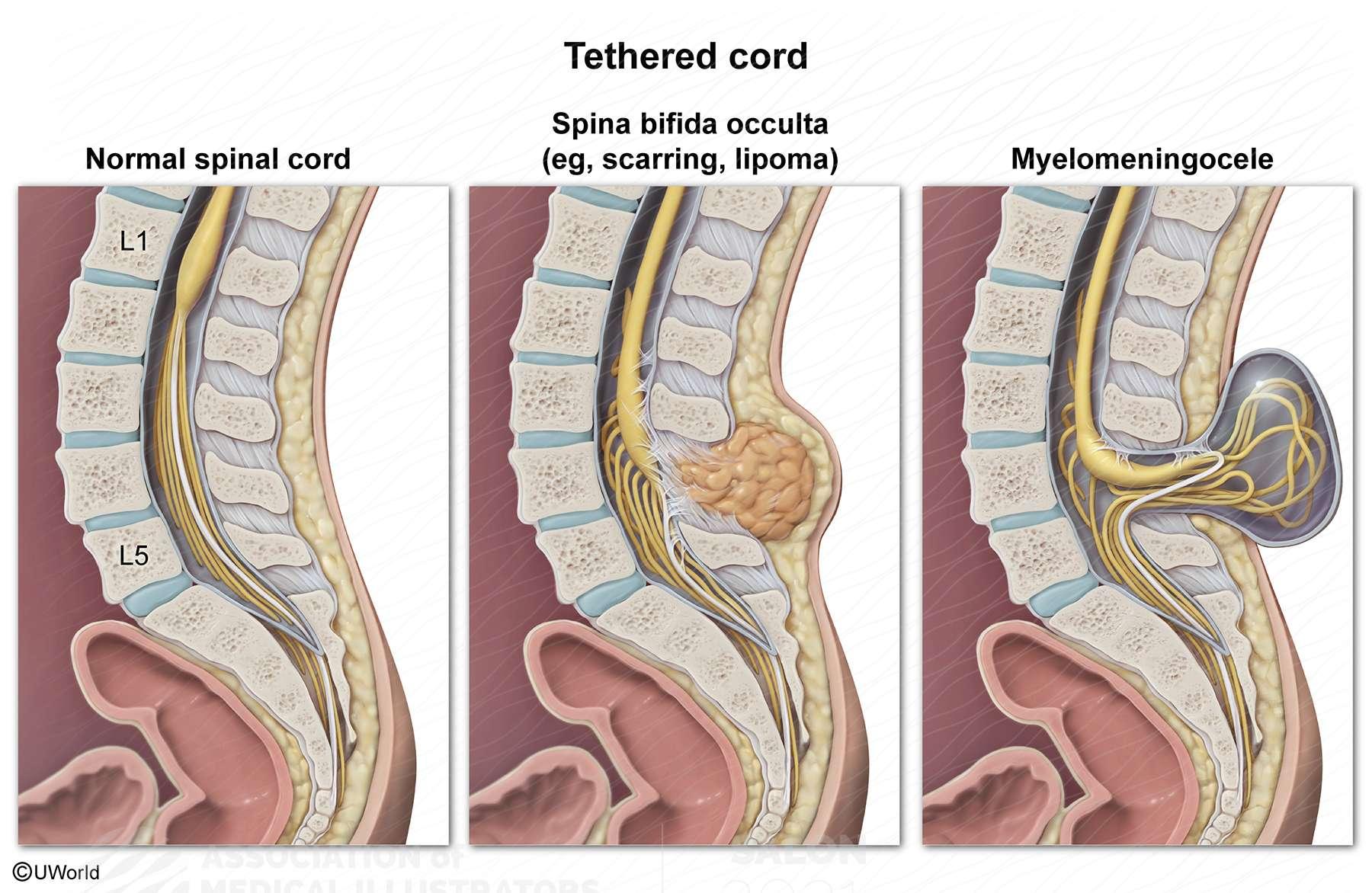Spine Detethering Surgery: Restoring Mobility and Relieving Nerve Compression
Understanding Tethered Spinal Cord Syndrome and the Role of Spine Detethering Surgery
Introduction: Spine detethering surgery is a specialized procedure aimed at addressing tethered spinal cord syndrome, a condition characterized by the abnormal attachment of the spinal cord to surrounding tissues. This attachment restricts the normal movement of the spinal cord, leading to nerve compression and various debilitating symptoms. In spine detethering surgery, the surgeon releases the tethered spinal cord, relieving compression and restoring mobility. Let's delve deeper into the details of this surgical intervention and its potential benefits.

Understanding Tethered Spinal Cord Syndrome: Tethered spinal cord syndrome occurs when the spinal cord becomes abnormally attached to nearby tissues, such as the spinal column or surrounding structures. This attachment restricts the spinal cord's ability to move freely within the spinal canal, causing tension and compression. Tethering may be congenital or acquired due to conditions like spinal cord injury, spinal tumors, or spinal deformities.
Symptoms and Challenges: Tethered spinal cord syndrome can lead to a range of symptoms, including lower back pain, leg weakness or numbness, difficulty walking, bladder and bowel dysfunction, and deformities of the spine. These symptoms can significantly impact mobility, quality of life, and overall well-being. Conservative treatments such as physical therapy or medication may provide temporary relief, but surgery is often necessary for long-term management.
Spine Detethering Surgery: Spine detethering surgery aims to release the spinal cord from its abnormal attachments and restore its freedom of movement. The procedure involves making an incision in the affected area of the spine and carefully detaching the spinal cord from the surrounding tissues. The surgeon may also address any underlying conditions contributing to the tethering, such as removing tumors or correcting spinal deformities. By alleviating tension and compression, spine detethering surgery helps relieve nerve impingement and improves the function of the spinal cord.
Benefits and Recovery: Spine detethering surgery offers several potential benefits for individuals with tethered spinal cord syndrome. By releasing the spinal cord, the procedure can relieve symptoms such as pain, numbness, and weakness in the legs. It may also help improve bladder and bowel function, correct spinal deformities, and prevent further neurological deterioration. However, recovery from spine detethering surgery may vary based on individual factors and the extent of the procedure. Rehabilitation and physical therapy are often recommended to aid in the recovery process and maximize outcomes.
The success rate of spine detethering surgery varies depending on various factors such as the underlying condition, severity of tethering, and individual patient characteristics. Overall, studies have reported success rates ranging from 70% to 90%, with a majority of patients experiencing improvement in symptoms and functional outcomes after the procedure. However, it is essential to consult with a spine surgeon to assess the specific case and potential success of the surgery.
While spine detethering surgery aims to release the spinal cord and provide long-term relief, individual results may vary, and additional treatments or monitoring may be required in some cases.
Like any surgical procedure, spine detethering surgery carries risks such as infection, bleeding, nerve damage, or cerebrospinal fluid leakage, but these complications are relatively rare and can be managed with proper medical care.
Recovery time varies depending on the individual and the extent of the surgery, but most patients can expect a hospital stay of a few days and a recovery period of several weeks to months before returning to normal activities.
While spine detethering surgery aims to relieve symptoms associated with tethered spinal cord syndrome, complete resolution of symptoms cannot be guaranteed, and some residual symptoms may persist.
Yes, spine detethering surgery can be performed on children with tethered spinal cord syndrome. Pediatric patients often have good outcomes with early intervention, but it is important to consult with a pediatric spine specialist to determine the most appropriate course of action.
We are associated with experienced and highly skilled medical professionals. We use the latest medical technology available in the world and we provide medical services in collaboration with JCI & NABH Certified hospitals only. Our services include various types of treatment and organ restructuring and transplant.
